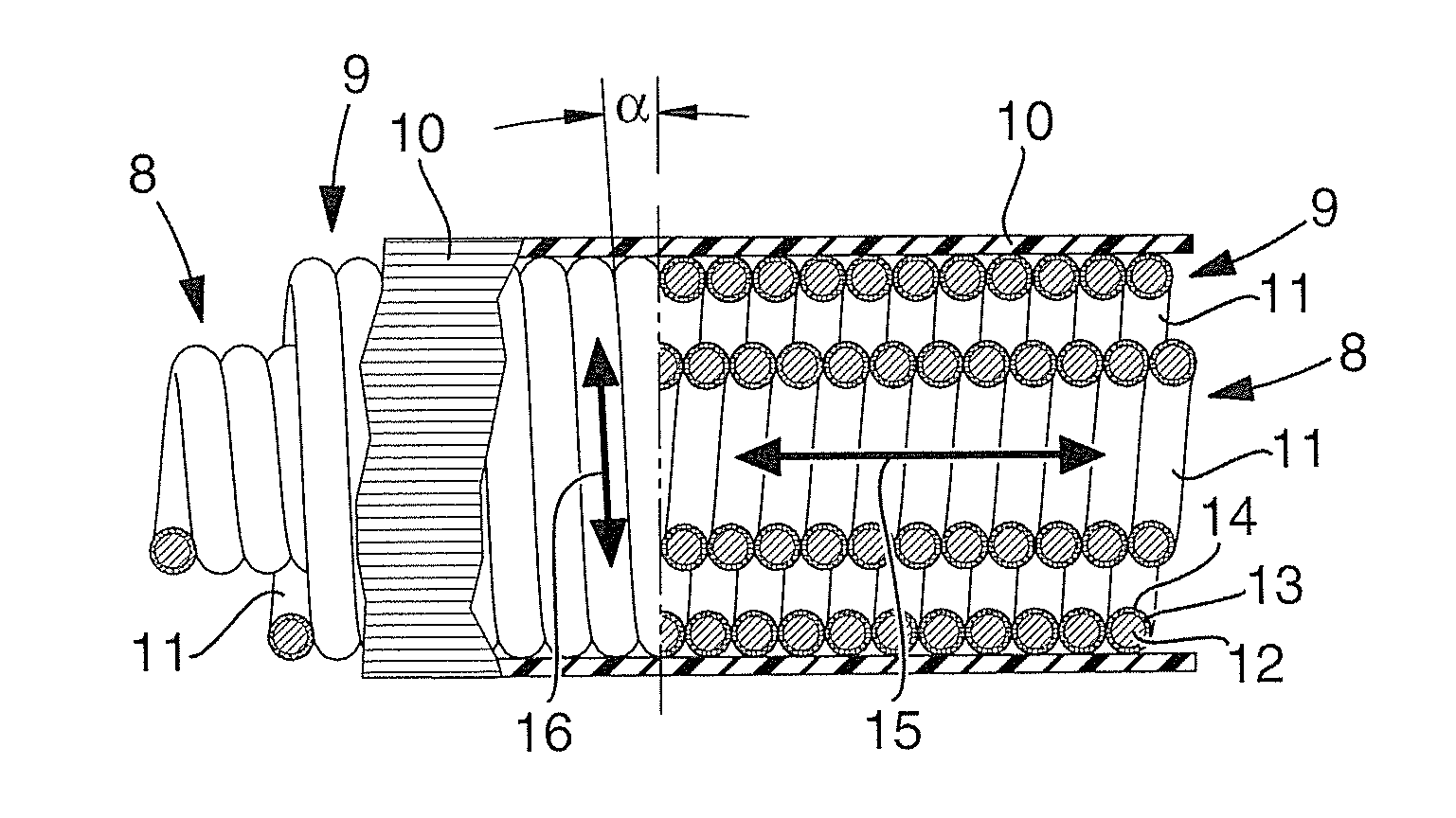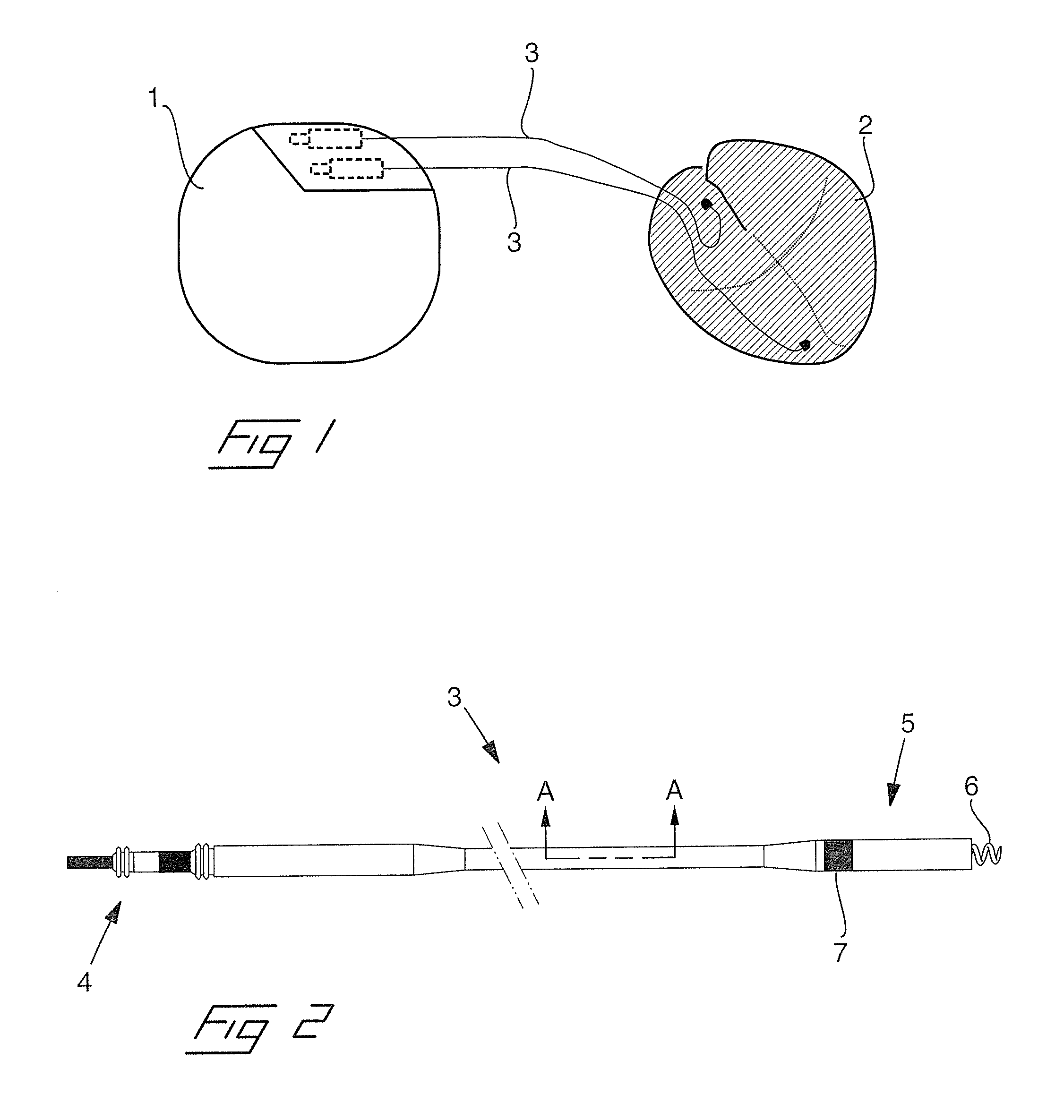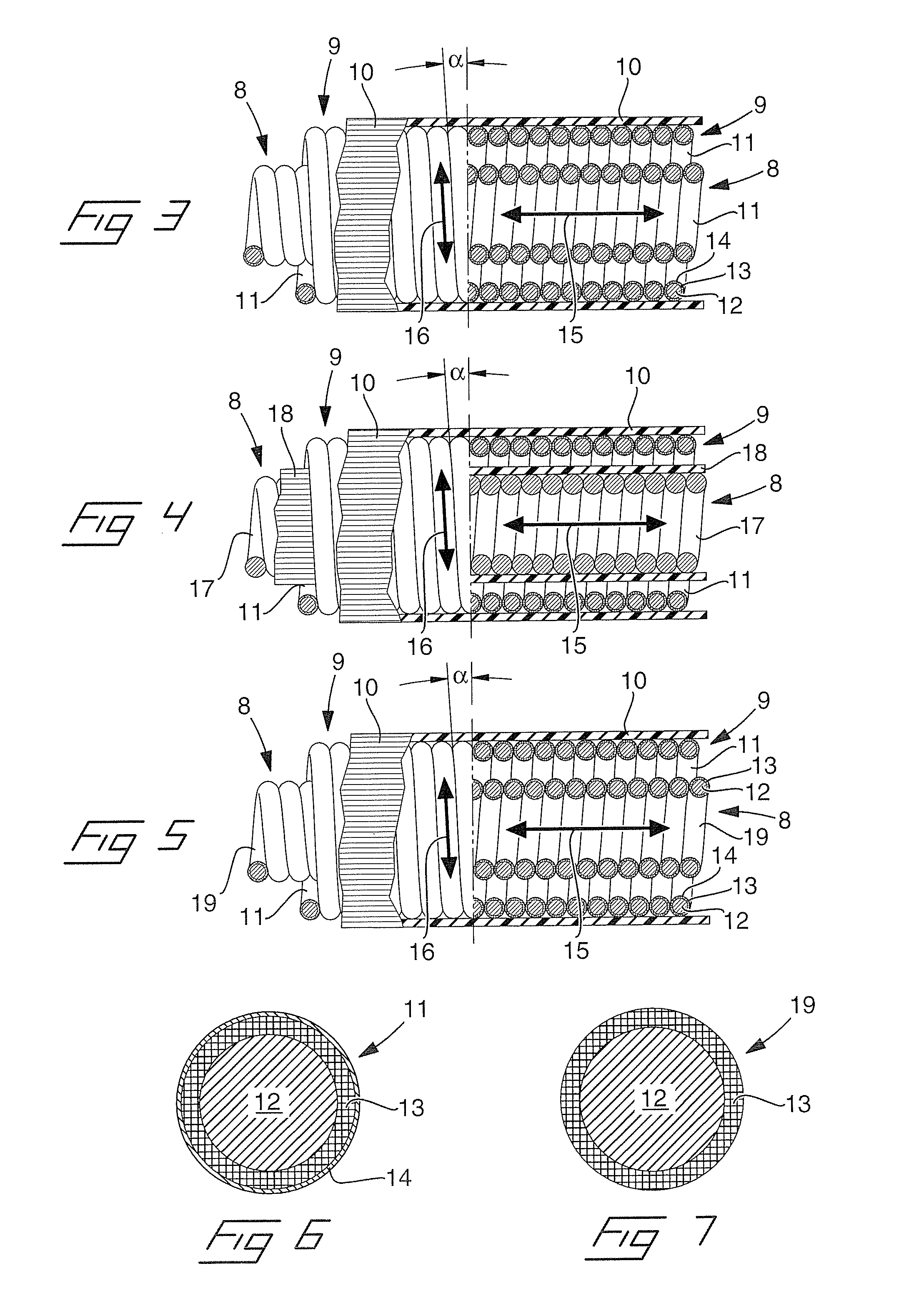Medical implantable lead and method for the manufacture thereof
a technology of implantable lead and lead plate, which is applied in the direction of external electrodes, sensors, diagnostics, etc., can solve the problems of increased rigidity, increased thickness of implantable lead, and increased contact temperature of electrodes, so as to increase the pitch of helically wound wires and increase the angle
- Summary
- Abstract
- Description
- Claims
- Application Information
AI Technical Summary
Benefits of technology
Problems solved by technology
Method used
Image
Examples
Embodiment Construction
[0028]Reference is first made to FIG. 1, in which is shown, in a schematic view, the connection of a pacemaker 1 to a heart 2 by means of two medical implantable leads 3. More precisely, one lead is connected to the right atrium and the other lead is connected to the right ventricle of the heart for monitoring and pacing of the heart rate. The pacemaker is normally adapted to be implanted under the skin of the patient, e.g. in the area of one of the collar bones, and the leads can preferably be inserted through a vein leading to the heart. It is to be noted that the reproduction scale of the pacemaker and the heart in the view of FIG. 1 are different for simplified drawing.
[0029]In FIG. 2 is illustrated a medical implantable lead 3, which has been shortened for simplified drawing. The lead has a connector 4 in a proximal end for connection to the pacemaker, an intermediate flexible lead portion, and a so called header 5 in a distal end. The header is provided with a helix 6, which c...
PUM
| Property | Measurement | Unit |
|---|---|---|
| angle | aaaaa | aaaaa |
| thickness | aaaaa | aaaaa |
| thickness | aaaaa | aaaaa |
Abstract
Description
Claims
Application Information
 Login to View More
Login to View More - R&D
- Intellectual Property
- Life Sciences
- Materials
- Tech Scout
- Unparalleled Data Quality
- Higher Quality Content
- 60% Fewer Hallucinations
Browse by: Latest US Patents, China's latest patents, Technical Efficacy Thesaurus, Application Domain, Technology Topic, Popular Technical Reports.
© 2025 PatSnap. All rights reserved.Legal|Privacy policy|Modern Slavery Act Transparency Statement|Sitemap|About US| Contact US: help@patsnap.com



